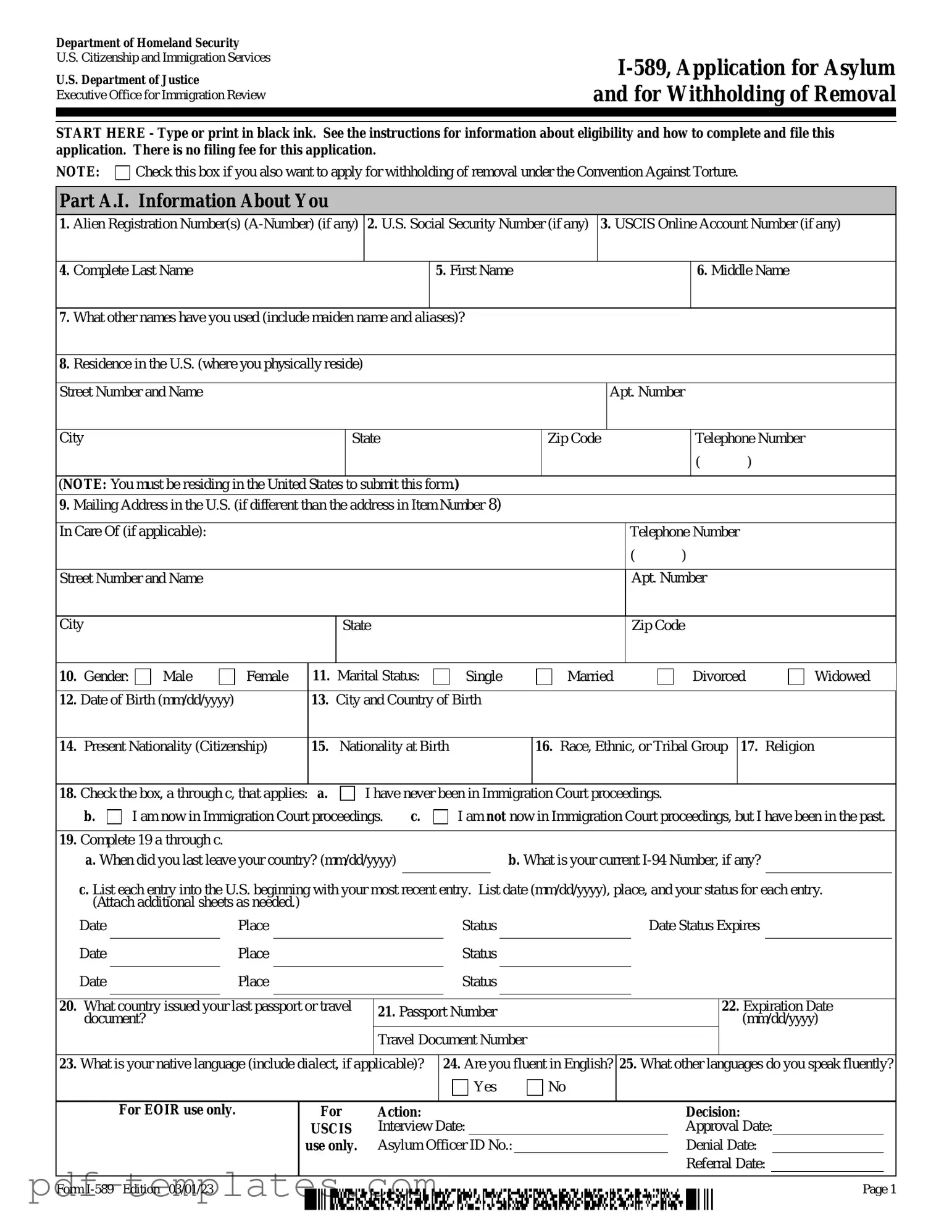The USCIS I-589 form, used for applying for asylum in the United States, shares similarities with the I-131 form, which is the Application for Travel Document. Both forms are essential for individuals seeking protection or residency in the U.S. The I-131 allows applicants to request permission to travel outside the country while their asylum application is pending. Like the I-589, the I-131 requires detailed personal information and a clear explanation of the applicant's circumstances, ensuring that the individual’s need for protection is understood by immigration officials.
Another document similar to the I-589 is the I-730 form, known as the Refugee/Asylee Relative Petition. This form is used by individuals granted asylum to petition for their family members to join them in the U.S. Both forms emphasize the importance of family unity and provide a pathway for those seeking safety. The I-730 requires applicants to provide proof of their asylum status and information about their relatives, paralleling the I-589's focus on establishing a credible fear of persecution.
The I-485 form, or Application to Register Permanent Residence or Adjust Status, also has commonalities with the I-589. Individuals who have been granted asylum may use the I-485 to apply for a green card. Both forms require extensive personal information and documentation to support the applicant's claims. The transition from seeking asylum to applying for permanent residency reflects a journey toward stability and security, which both forms facilitate.
The I-864 form, known as the Affidavit of Support, is another document that shares characteristics with the I-589. While the I-589 focuses on asylum eligibility, the I-864 ensures that immigrants have adequate financial support. This form is often required when family members join an asylee in the U.S., highlighting the importance of financial stability in the immigration process. Both forms reflect the U.S. government's commitment to ensuring that individuals can successfully integrate into society.
The I-601 form, or Application for Waiver of Grounds of Inadmissibility, is similar in that it addresses barriers to obtaining immigration benefits. Individuals who have been denied entry or benefits due to certain legal grounds may use this form to seek a waiver. Like the I-589, the I-601 requires a thorough explanation of the applicant's situation and the reasons for their inadmissibility. Both forms underscore the complexities of the immigration system and the need for individuals to present their cases effectively.
The California Agreement Room form is vital for establishing clear expectations in rental arrangements, ensuring that both landlords and tenants understand their respective rights and responsibilities. This is especially important in light of various forms used in different housing circumstances. For those looking for additional resources, All California Forms can provide further information and templates necessary for compliance with local regulations.
Finally, the N-400 form, which is the Application for Naturalization, also has parallels with the I-589. After obtaining asylum and later adjusting status, individuals may apply for citizenship using the N-400. Both forms require applicants to demonstrate their commitment to the United States and provide detailed personal history. The transition from asylum seeker to citizen represents a significant achievement, and both forms play a crucial role in that journey.
